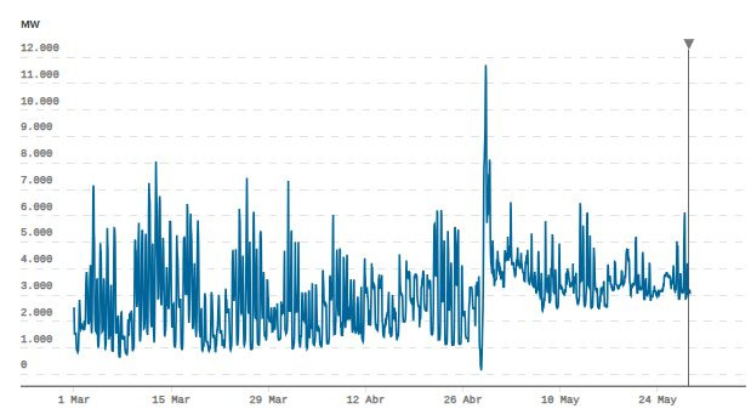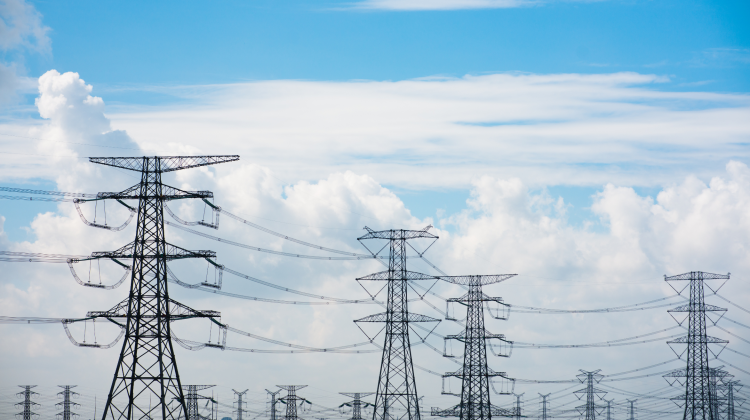Despite a month having passed since the unprecedented blackout that left millions without power, no official technical explanation has yet been provided for the structural causes behind the event.
Sector specialists increasingly suspect that the actual causes are already known but have not been publicly disclosed. Given that the system is fully digitalised and data is accessible to investigators, this lack of transparency is being met with growing criticism.
The President of Red Eléctrica, Beatriz Corredor, explained that the incident began with a series of anomalous oscillations and cascading disconnections that led to the loss of 2.2 GW of generation in just 20 seconds, significantly exceeding the system’s operational limits.
“It was the worst day in the lives of all the engineers at Red Eléctrica. I don’t want to speculate—we prefer to focus on the data, which we have provided promptly to all relevant authorities. […] Everyone familiar with the TSO model understands that system operation and transmission are managed with full independence and without conflicts of interest,” she stated during the opening of the VII Ibero-American Congress on Engineering and Technology (CIBITEC 2025).
Nevertheless, many in the sector highlight the absence of detailed data. For example, Jorge Antonio González Sánchez, Director of Energy and Projects at Losán, firmly criticised the lack of official information: “We haven’t seen a single figure, graph or data-driven analysis on what actually happened”, in conversation with Strategic Energy Europe.
From academia, energy consultant and professor Javier Robledo expressed strong concerns: “It’s outrageous that a month after the blackout the public still has no idea what happened.” He questions how, in a system that records events every 20 milliseconds, no official findings have yet been shared.
He also argued that continuing with the nuclear phase-out is reckless given the current lack of clarity: nuclear power stations had very low grid participation at the time of the event. Robledo insists on the need to improve interconnections with Europe, where Spain remains below EU targets, and to step up incentives for electrifying key sectors such as industry and transport.
González Sánchez notes contradictions in the official narrative, pointing out that abnormal voltage conditions were recorded as early as 10:00 AM, hours before the collapse, according to data from power plant management systems. He also referenced reports of voltage instability during Easter week that have yet to be publicly acknowledged.
What we know so far
On 28 April, the Iberian Peninsula’s power system collapsed at 12:33:24 following a series of critical events. At 12:03, an anomalous oscillation of 0.6 Hz was recorded, followed by a second at 12:16. At 12:32:57, a major generation disconnection occurred in Granada, leading to total system failure just 27 seconds later. More than 2.2 GW of generation was lost in under 20 seconds.
Although automatic protections activated, they were not sufficient to contain the fault. Red Eléctrica collected system logs at 20-millisecond intervals and submitted them to the CNMC, the Ministry for the Ecological Transition, the United Nations (due to possible sabotage), and ENTSO-E.
According to the operator, voltage levels remained within the normative parameters set by Operational Procedure 1.1, although some conventional generators in southwest Spain showed inadequate reactive power absorption.
Ten minutes after the blackout, power restoration began via the French interconnection. By 17:00, 11 autonomous communities had regained supply, and by 04:00 the following day, 100% of transmission substations were back in operation.
Industry sources point to the Huéneja substation in Granada as the technical epicentre of the event, with an installed capacity of 668 MW (376 MW wind, 142 MW solar PV and 150 MW CSP). The initial system decoupling reportedly occurred there, triggering the chain reaction.
The core issue was the system’s inability to isolate and contain the fault. “Granada could have disconnected without the rest of the country noticing. But instead, we experienced a nationwide blackout,” González Sánchez warned.
Many analysts suggest the backdrop was a historic peak in intermittent renewable generation, combined with record-low synchronous and nuclear generation. “That wasn’t the direct cause, but it’s what turned a minor problem into a catastrophe,” the Losán executive stated.
A Lack of Grid Inertia and Rapid Response services is one of the main takeaways. In Portugal, for instance, fast system services are limited to traditional regulations (R1, R2, R3), which operate on timescales of seconds or minutes. There are still no FFR (Fast Frequency Response) products or virtual inertia markets, as noted by João Moura, Grid Connection Manager at Iberdrola | bp pulse.
Some sector leaders believe further measures are needed to strengthen the system. “Red Eléctrica already knows how to protect itself, even if it doesn’t yet know exactly what went wrong,” says González Sánchez. Since May, grid expansion works have been approved in critical nodes such as Huéneja, and the roles of combined cycle, hydropower and nuclear are being re-evaluated.
An analysis of combined cycle generation data from Red Eléctrica’s E·SIOS platform reveals a marked behavioural shift in this technology post-blackout. From 1 March to 28 April, output was low and erratic. After the event, it has become consistently higher and more stable, with peaks of up to 12,000 MW—a sign that the system is now relying more on this technology to maintain operational stability.

In parallel, potential regulatory reforms are being discussed to incentivise flexibility and controllability, including renewables-plus-storage tenders, capacity mechanisms, and fast response markets.
“The sooner we have flexibility mechanisms, the better for everyone,” González Sánchez concludes, stressing that future market designs must favour controllable projects, such as co-generation, which can contribute to local grid stability due to their proximity to consumption centres.






























